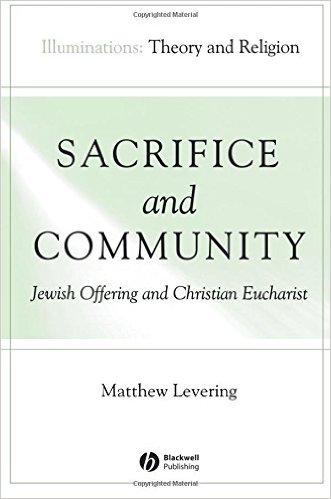 Jeg har lest ferdig Matthew Leverings bok Sacrifice and Community, som han avslutter på denne måten (inkludert et sentralt og interessant sitat fra pave Benedikt):
Jeg har lest ferdig Matthew Leverings bok Sacrifice and Community, som han avslutter på denne måten (inkludert et sentralt og interessant sitat fra pave Benedikt):
… As Dostoevsky writes, «And so, man must unceasingly feel suffering [because of man’s sin], which is compensated for by the heavenly joy of fulfilling the law, that is, by sacrifice.»
In exploring Eucharistic theology in this book, I have argued that such radical communion is attained most fully on earth in the Eucharist, which as our sacrificial sharing in Christ’s sacrifice provides a foretaste of the radical communion that is heaven. In the sacrifice-sacrament of the Eucharist, we learn charity by offering with Christ his own saving sacrifice. The sacrament of the Eucharist is a “school” of charity; it builds the Church by enabling us to enact Christ’s sacrifice with him. In the liturgy of the Eucharist, we learn “Jesus Christ and him sacrificed” and thereby we “put on the whole armor of God”. …
… All aspects – theological and liturgical – of the Eucharist should therefore express our Eucharistic sharing in Christ’s cruciform Godwardness, which deifies us. Joseph Ratzinger has described the opposite situation, in which the liturgy of the Eucharist, not understood “ecstatically” as a sacrifice, finds its ground in itself rather than in God:
“The turning of the priest toward the people has turned the community into a self-enclosed circle. In its outward form, it no longer opens out on what lies ahead and above, but is locked into itself. The common turning toward the East was not a «celebration toward the wall»; it did not mean that the priest «had his back to the people»: the priest himself was not regarded as so important. For just as the congregation in the synagogue looked together toward Jerusalem, so in the Christian Liturgy the congregation looked together «toward the Lord». As one of the fathers of Vatican II’s Constitution on the Liturgy, J. A. Jungmann, put it, it was much more a question of priest and people facing in the same direction, knowing that together they were in a procession toward the Lord. They did not close themselves into a circle, they did not gaze at one another, but as the pilgrim People of God they set off for the Oriens, for the Christ who comes to meet us.”
I would add that this “procession toward the Lord” advances only insofar as it is cruciform, that is to say insofar as the communion of the pilgrim People of God arises in and through Christ’s saving sacrifice and our Eucharistic (sacrificial) participation in it. …
